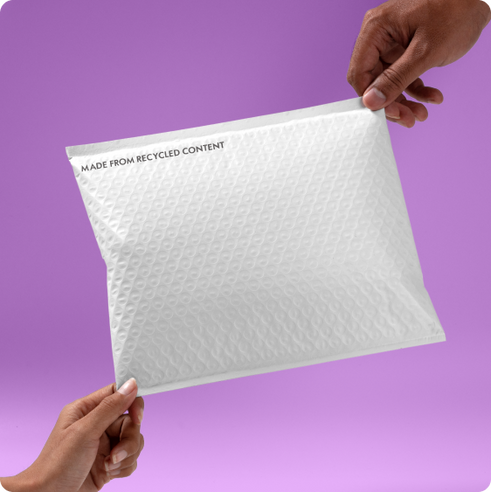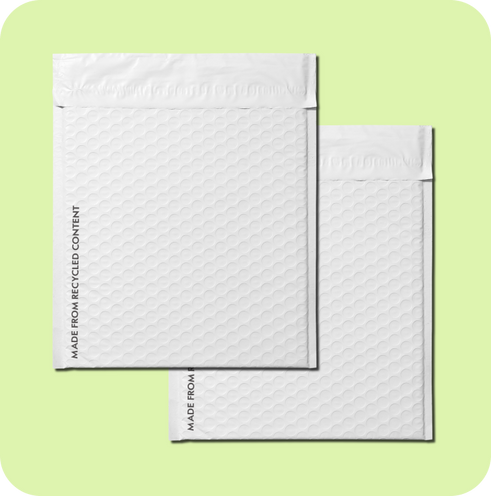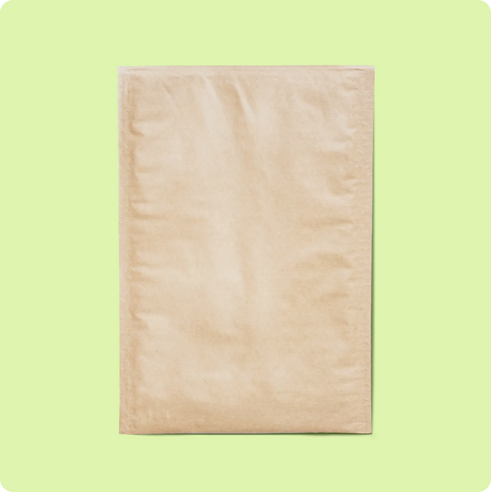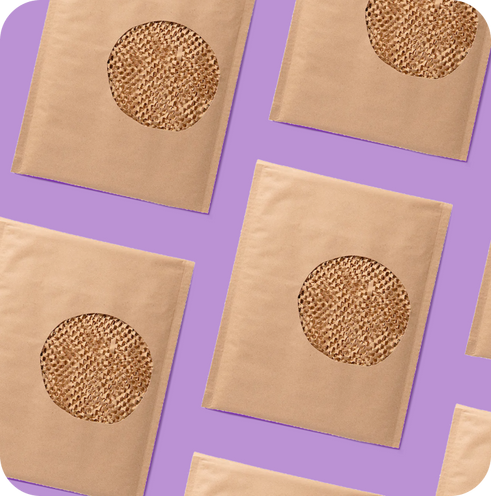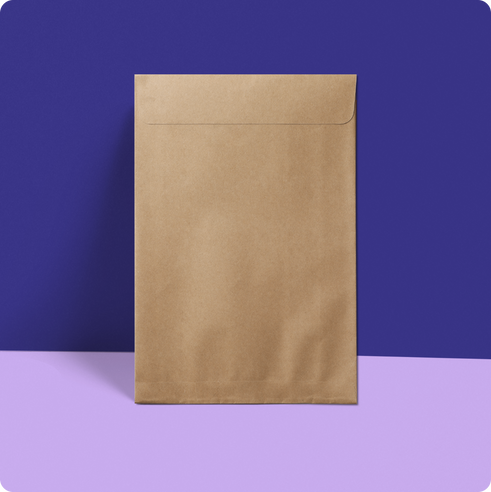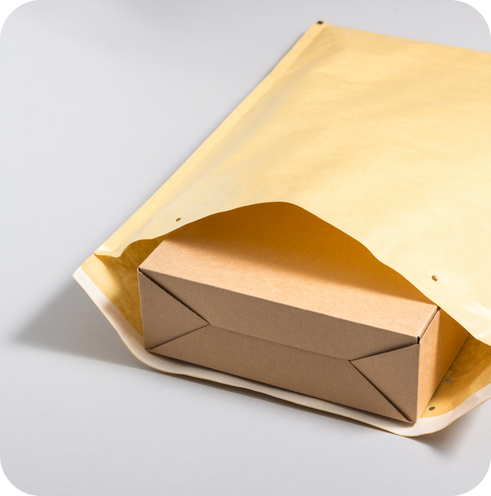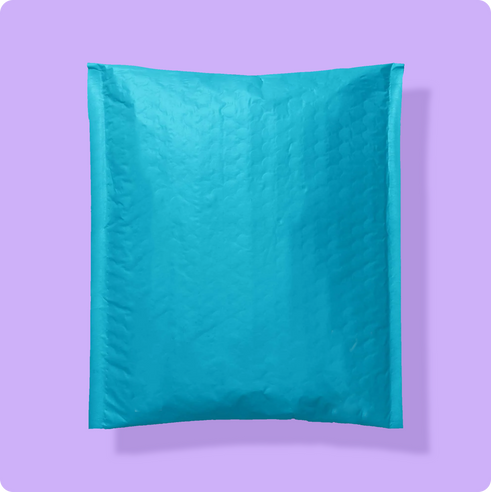Packaging 101: The Complete Guide
- Packaging 101
- Types of Packaging
- Aseptic Packaging
- Blister Packaging
- Biodegradable Packaging
- Bulk Packaging
- Carbon Neutral Packaging
- Circular Packaging
- Clamshell Packaging
- Compostable Packaging
- Cornstarch Packaging
- Corrugated Packaging
- Discreet Packaging
- Ecommerce Packaging
- Flexible Packaging
- Frustration Free Packaging
- Retail Packaging
- Secondary Packaging
- Smart Packaging
- Sustainable Packaging
- What is a PR Package?
- What is a Poly Mailer?
- Packaging Design Ideas
- AI Packaging Design
- Bakery Packaging Ideas
- Bath Bomb Packaging Ideas
- Bath Salt Packaging Ideas
- Body Butter Packaging Ideas
- Body Oil Packaging Ideas
- Body Scrub Packaging Ideas
- Brownie Packaging Ideas
- Cake Packaging Ideas
- Cake Pop Packaging Ideas
- Candle Packaging Ideas
- Candy Packaging Ideas
- Canva Packaging Design
- Chocolate Packaging Ideas
- Cinnamon Roll Packaging Ideas
- Clothing Packaging Ideas
- Coaster Packaging Ideas
- Coffee Bag Design Ideas
- Cookie Packaging Ideas
- Cosmetics Packaging Design
- Cotton Candy Packaging Ideas
- Cupcake Packaging Ideas
- DIY Packaging Ideas
- Dog Treat Packaging Ideas
- Food Packaging Ideas
- Empanada Packaging Ideas
- Etsy Packaging Ideas
- French Fries Packaging Ideas
- Frozen Food Packaging Ideas
- Hair Extension Packaging Ideas
- Handbag Packaging Ideas
- Jewelry Packaging Ideas
- Keychain Packaging Ideas
- Lash Packaging Ideas
- Lip Gloss Packaging Ideas
- Macaron Packaging Ideas
- Minimalist Packaging Ideas
- Mug Packaging Ideas
- New Employee Welcome Kit Ideas
- Packaging Colors
- Packaging Inserts Ideas
- Packaging Logo Design
- Packaging Typography
- Perfume Box Design Ideas
- Pizza Box Design Ideas
- Popcorn Packaging Ideas
- Scarf Packaging Ideas
- Skincare Packaging Design Ideas
- Soap Packaging Ideas
- Sock Packaging Ideas
- Sticker Packaging Ideas
- Sunglass Packaging Ideas
- Sustainable Packaging Ideas
- Tea Packaging Ideas
- Wax Melt Packaging Ideas
- Weed Packaging Ideas
- T-Shirt Packaging Ideas
- Wine Packaging Design Ideas
- What is a Packaging Engineer?
- Types of Packaging Materials
- Chipboard vs Cardboard
- Compostable Packaging Materials
- Alternatives to Plastic Packaging
- Edible Packaging Materials
- Food Packaging Materials
- Are Poly Mailers Recyclable?
- How to Recycle Cardboard Boxes
- How to Recycle Packaging Materials
- Medical Device Packaging Materials
- Mono Material Packaging
- Pharmaceutical Packaging Materials
- Plastic Food Packaging
- Protective Packaging Materials
- Reusing Packaging Materials
- Types of Packaging Foam
- Void Fill Packaging
- What is Chipboard?
- What is Kraft Paper?
- Offset vs Digital Printing
- RGB vs CMYK Printing
- Screen Printing vs Digital Printing
- Screen Printing vs Sublimation
- What is a Dieline in Packaging?
- What is Die Cutting?
- What is Digital Printing?
- What is Flexographic Printing?
- What is Glassine Paper?
- What is Offset Printing?
- What is Spot UV Printing?
- Why is 300 DPI Good for Printing?
- How to Estimate Shipping Costs
- How to Pack Glass for Shipping
- How to Mail a Bubble Mailer
- How to Make a Shipping Label
- How To Measure Box Dimensions and Sizes
- How to Ship Alcohol
- How to Ship Artwork
- How to Ship Books
- How to Ship a Cake
- How to Ship Candles
- How to Ship Chocolate
- How to Ship Clothes
- How to Ship Cookies
- How to Ship Food
- How to Ship a Hat
- How to Ship Jewelry
- How to Ship a Laptop
- How to Ship Perfume
- How to Ship a PC
- How to Ship Perishable Food
- How to Ship Plants
- How to Ship Shoes
- How to Ship Vinyl Records
- Packaging Symbols
- Shipping Large Items
- What is a Delivery Exception?
- What is Shipping Insurance?

Britt Martin, Arka's Partnerships lead, blends e-commerce expertise with sustainability advocacy, nurturing startups as a Founder in Residence at NYU.
Key Benefits of Biodegradable Packaging
Sustainable and environmentally friendly, here are the key benefits of biodegradable packaging.
• Reduced production costs: biodegradable packaging materials are normally lighter, so companies can save costs instead of paying out of pocket. Also, biodegradable packaging adds nutrients to the soil when it dissolves, which helps boost food production and farming and saves on costs.
• Non-toxic and allergen-free: this packaging type is free from harmful chemicals, so it’s a good solution for storing and serving food products without the risk of cross-contamination.

• Reduced carbon footprint: Using this packaging type reduces your carbon footprint and carbon emissions. It cuts down on waste and doesn’t add to the growing problem of landfill.
• Eco-friendly and sustainable solution: biodegradable packaging completely degrades after a short-period of time and goes back into nature without polluting the environment.
Common Myths about Biodegradable Packaging
Even though biodegradable packaging is one of the best sustainable packaging solutions you can incorporate into your life and your business, there are some misconceptions. Let’s explore and bust these myths.
• Myth 1: Biodegradable packaging decomposes instantly: it decomposes at a rapid pace, but not instantly. On average, depending on the type of material, the process can take three to six months to occur.
• Myth 2: Biodegradable packaging is expensive: biodegradable packaging is cost-effective because the materials used are much lighter in comparison to heavier materials.
• Myth 3: Biodegradable packaging is inferior in quality: There are many biodegradable packaging options to select from that are strong, durable and sturdy - and are therefore high in quality.

Credits: Danilo Saito, Maira Kondo, Akira Mizutani, Lau Bellesa & Mariana Mascarenhas
6 Types of Biodegradable Packaging Materials
What packaging materials are biodegradable? What is biodegradable packaging made of? Well, here’s a list of some commonly used materials.
Cornstarch Packaging
Cornstarch packaging is made up of a combination of starch and glycerin. It has the same storage properties as plastic, but unlike plastic, it degrades quickly. It is frequently used for food on the go.

Credits: Nayana Gupta, Bizongo
Mushroom Packaging
Did you know that mushroom roots and agricultural waste can be used to create packaging? It’s useful for storing beauty and skincare products that come available in (eco-friendly) bottles, such as serums, body creams, shampoos and conditioners.

Credits: thedieline.com, Life Elements
Seaweed Packaging
Agar, a substance extracted from seaweed and algae, is used to make this type of packaging. It is commonly used for dry food products and soap and shampoo bars.

Credits: Evoware
Cellulose Packaging
Cellulose packaging is made from the regenerated cellulose of wood or cotton. It comes available as a sheer, thin and translucent film and it is often used for products such as baked goods, sweets, nuts and other dry snacks. You can also check our premium custom candy boxes that help brands enhance their appeal.

Credits: Lynxeye
Hemp Packaging
Hemp is a plant-based material used to make paper, textiles, bioplastics and other biodegradable materials used in packaging. It’s an insulating material used for storage boxes to protect products (such as food) against extreme temperatures (cold or heat) during transportation.

Paper Packaging
Paper packaging is biodegradable and recyclable and is regularly used as material for boxes.
At Arka, we create custom packaging that is sustainable and eco-friendly. We offer custom boxes for any niche; you can check our custom soap boxes or food boxes. Helping brands level up is our top priority; our top-notch custom mailer boxes and shipping boxes ensure safe delivery of products and memorable unboxing experience.

Credits: Alexandra Davis
How is Biodegradable Packaging Made?
Let’s explore the process of how how is biodegradable packaging made:
• Selection of biodegradable materials: The type of material used for biodegradable packaging will depend on the purpose of the packaging, and the type of product that will be stored within it.
• Extraction and processing: Once the type of material required for biodegradable packaging has been selected, it’s time to source and extract the material required for production. Once this has been sourced and extracted, the material will be ready for processing, which could occur in the form of breaking, sifting or grinding.
• Manufacturing: Ideally, the manufacturing process needs to be a sustainable practice that’s been implemented. This could occur in the form of using renewable energy instead of using fossil fuel power. During the manufacturing process, the packaging is produced.
• Distribution: Once manufactured, the packaging is labelled, branded and distributed for business use.

How To Dispose of Biodegradable Packaging
Knowing how to dispose of biodegradable packaging properly is essential to prevent contamination with chemicals and to ensure that it doesn’t end up in landfill.
• Home composting: Depending on where you live, your local authority might be able to provide home composting resources, or you can purchase home composting kits from DIY stores. Because biodegradable packaging is free from toxins, you can add it to your compost heap without contaminating the pile.
• Industrial composting: If you don’t have the facilities to compost at home, then you can donate biodegradable packaging to an industrial composting site, which processes organic waste using large-scale processes.
• Recycling facilities: You can recycle at home, as long as you separate the biodegradable packaging from other recyclable items. Alternatively, you can take the biodegradable packaging to recycling banks, which normally provide individual units and recycling facilities for different materials.
Credits: thedieline.com
Why You Should Switch To Biodegradable Packaging
Switching to biodegradable packaging is one of the best decision you can make for your business, and here are some of the reasons why:
• Eco-friendly image: These days, many customers care about doing their part for the planet and they want to connect with brands that care about sustainability. By using biodegradable packaging, you demonstrate eco-friendly values.
• Regulatory compliance: Because biodegradable packaging is free from harmful chemicals, it’s much safer to use for foods and other products, and are therefore much more compliant with regulations.
• Reduced environmental impact: Using biodegradable packaging reduces your carbon footprint and emissions. This is because this type of packaging is created with materials that degrade and dissolve over a short period of time, instead of going to landfill and contributing to waste.
• Reduced production costs: Using biodegradable packaging reduces production costs by cutting down operational costs, reusing inventory and ultilizing fewer materials and resources.
• Increased sales: If customers notice the use of biodegradable packaging, that signals to them that your business cares about sustainability, and therefore this makes them much more likely to buy into your brand.
• Non-toxic and allergen-free: Biodegradable packaging is toxin-free and allergen-free, meaning that it is safer for serving food and customer use.

Biodegradable Packaging Trends
With the increased use of biodegradable packaging as a solution for many businesses, there has been an increase in biodegradable packaging trends.
• Active packaging: This is used to eliminate unwanted flavors and odors in foods.
• Biodegradable inks: These are used for branding, are less costly and are made from natural vegetable oils.
• Edible packaging: This is made of natural and plant-based materials and can be eaten, further eliminating waste.
• Plantable packaging: Embedded with seeds and can be planted into soil after use.

Credits: ThisisEngineering
Final Thoughts
Biodegradable packaging is a type of packaging that degrades quickly after use. It is one of the most eco-friendly options and it comes with plenty of benefits, such as reduced costs and carbon emissions. Plus, it’s free from toxins, making it safe for use.
By embracing biodegradable packaging businesses can make a positive impact on our environment and pave the way for a greener future.
FAQs on Biodegradable Packaging
Can biodegradable packaging be used for long-term storage?
Depending on the type of material used (e.g. hemp or paper packaging), some types of biodegradable packaging can be strong, durable and resistant to temperature or moisture change, so they can be used for long-term storage.
Are there any regulations governing biodegradable packaging?
Normally, there are regulations for biodegradable packaging, but depending on where you are based, laws vary. Biodegradable must be recyclable and marked correctly so that consumers are aware of how to dispose of it without contaminating recycling streams.
What to do with biodegradable packaging?
If you’re wondering what to do with biodegradable packaging, the best thing to remember is to avoid throwing it in the bin, otherwise it will end up in landfill. Add it to your compost heap or recycle it. Make sure you separate biodegradable packaging from other recycling items.
Why is biodegradable packaging good?
Biodegradable packaging is good because it is an eco-friendly and sustainable choice. Not only is it cost-effective, but it also demonstrates a brand's commitment to environmental responsibility; so it helps increase customer trust, loyalty, and have a competitive advantage.

